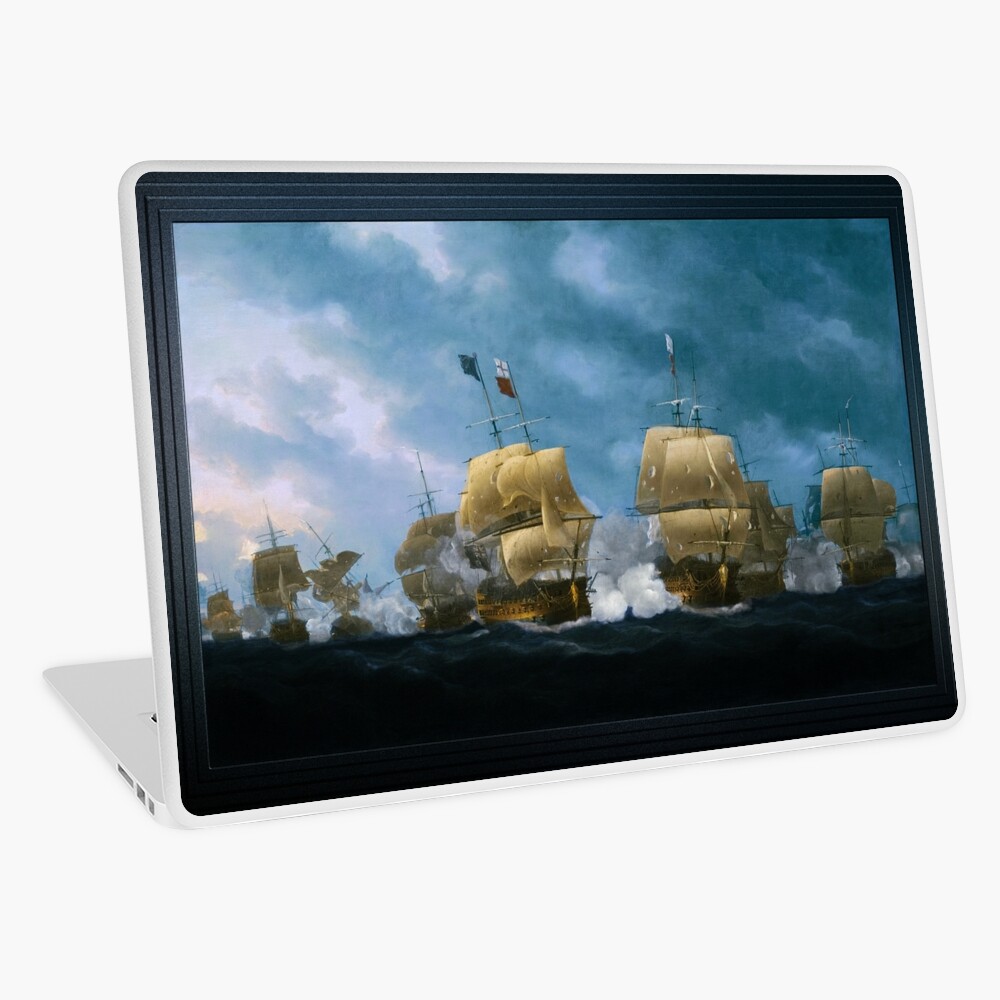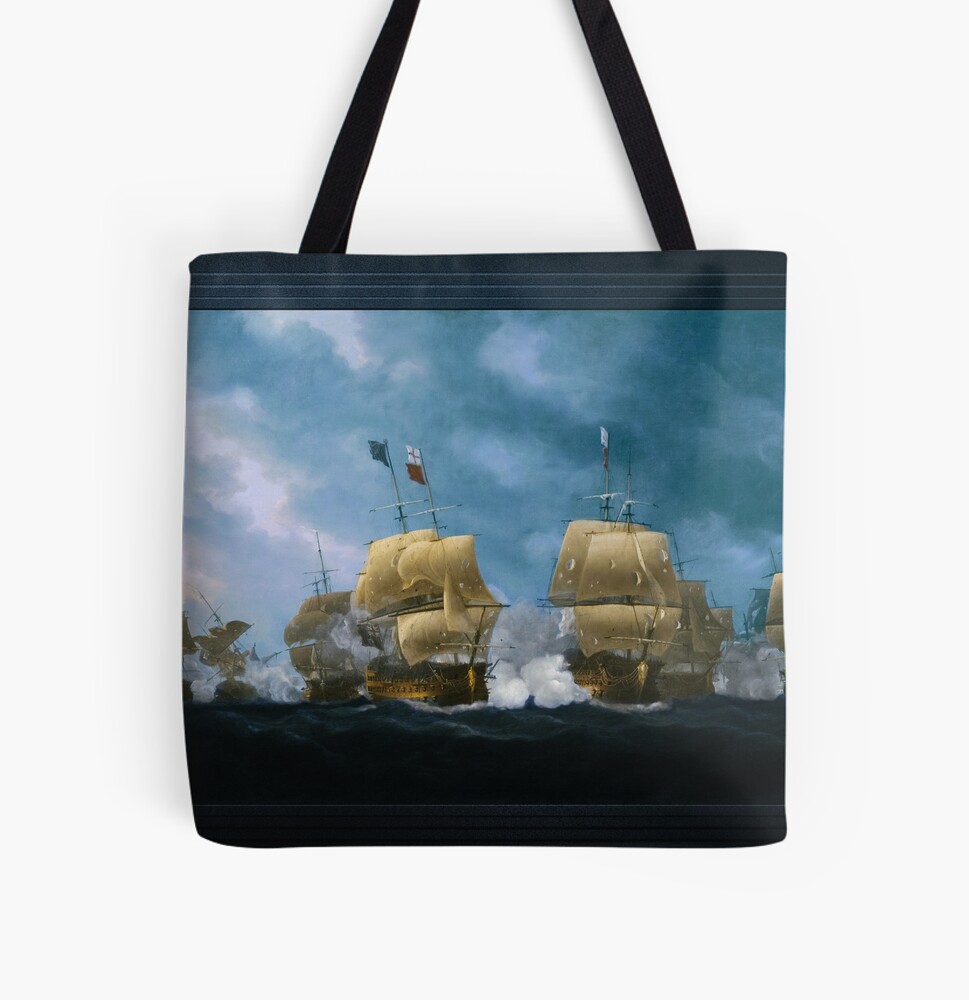
De Slach by Quiberon Bay
De Slach by Quiberon Bay, op 20 novimber 1759 troch de Britske skilder Nicholas Pocock (1740 – 1821); is known for the numerous naval battle scenes he created during the age of the sailing ships

De seeslach by Quiberon Bay wurdt krêftich ôfbylde yn dit skilderij troch de Britske skilder Nicholas Pocock, as a float fan oarlochsskippen ûnder nimme in oarloch op see, inoar fan tichteby oandwaan, sjitten dêr kanonnen yn it yngewant fan elkoars oarlochsskippen op 'e rûge gong op hege see, ûnder stoarmwolken op in swier bewolkte dei.
The Battle of Quiberon Bay is a retouched digital art old masters reproduction of a public domain image that is available for purchase online in a variety of material formats including canvas prints, acryl prints, metalen prints, hout prints, framed prints, posters, en as rôle canvas prints yn in ferskaat oan grutte út 12 inches oan 72 inch ôfhinklik fan de grutte fan it eigentlike keunstwurk en de print-on-demand winkel wêrfan jo kieze om de keunst te keapjen.
Ynformaasje hjirûnder ôflaat fan Royal Museums Greenwich
The Battle of Quiberon Bay was a major naval engagement that took place on November 20, 1759, during the Seven Years War. The conflict involved the major European colonial powers and was fought around the globe. The French had been at war with Britain since 1756, and their position in Canada, India, and the West Indies was on the verge of collapse. In Europe, they faced stalemate against Prussia, which received British support.

The French planned to land an army of 20,000 men in Ireland, which was assembled in the gulf of Morbihan in southern Brittany under the Duc d’Aiguillon. The force was to be escorted by the Brest fleet under Admiral Hubert de Conflans. Admiral Sir Edward Hawke’s Channel Fleet blockaded Brest to prevent the French from leaving to collect the troop transports. lykwols, during a gale in the first week of November, Hawke’s ships were forced to run for shelter in Torbay, giving de Conflans the chance to escape.
On hearing that the French had escaped, Hawke pursued them and sighted them 20 miles out to sea on November 20. De Conflans, relying on local knowledge, ordered his fleet to take refuge in Quiberon Bay, south of Morbihan, assuming Hawke would not follow due to the ill-charted rocks, reefs, and wild seas. This was a miscalculation, and Hawke relentlessly pursued him into the bay, losing two of his own ships on the outer reefs but sinking the French ‘Thesee’ and ‘Superbe’ by a combination of gunfire and the weather, and otherwise decimating de Conflans’ force in what became an action practically in the dark.

The French flagship ‘Soleil Royal’ went aground in the bay, near Le Croisic, and was burned to prevent capture the following day. Others were captured, including the ‘Heros,’ which was burned. A few French ships escaped to Rochefort, and some others managed to find refuge in the mouth of the River Vilaine, where they were trapped for months, and one more lost by grounding.
The battle was a decisive victory for the British, and it stopped any French plans to invade Britain during the Seven Years War. The famous naval song ‘Hearts of Oak’ was composed to commemorate the battle. The battle was fought so close inshore that contemporary accounts reported that ten thousand persons watched it from the coast.
This rather later painting by Pocock is partly based on an earlier one by Dominic Serres and shows Hawke’s ‘Royal George’ in the left center, with his blue admiral’s color at the main, in action with de Conflans’ ‘Soleil Royal’ to the right, though the latter is wrongly shown as a three-decker. A French ship astern of the ‘Royal George’ is firing broadsides on both sides, her starboard battery probably directed at Augustus Keppel’s ‘Torbay,’ while between them, the French ‘Thesee’ sinks by the bows.
This was largely due to water swamping through her lower and forward leeward gunports in the heavy seas, since this battle was an example of the disadvantage of fighting with the ‘weather gauge’ (the generally assumed benefit of being to windward).
Info hjirûnder ôflaat fan Wikipedia.org

Pocock waard berne yn Bristol yn 1740; de soan fan in seeman, hy folge yn syn heit syn berop en wie baas fan in keapfardij troch de leeftyd fan 26.
Yn syn tiid op see, hy waard in betûft keunstner troch it meitsjen fan inket en wask sketsen fan skippen en kustsênes foar syn logboeken.
Yn 1778, Pocock syn wurkjouwer, Richard Kampioen, rekke finansjeel ynsolvent troch de gefolgen fan de Amerikaanske Unôfhinklikheidsoarloch op de transatlantyske hannel.
Dêrtroch, Pocock joech de see op en wijde him oan it skilderjen; mei de earste fan syn wurken wurde tentoansteld troch de Britske Royal Academy of Arts yn 1782.
Letter dat jier, Pocock krige de opdracht om in searje skilderijen te meitsjen dy't de oerwinning fan George Rodney yn 'e Slach by de Saintes yllustrearje.; en as favoryt fan Samuel Hood waard hy beneamd ta marineskilder fan kening George.
Pocock's marineskilderijen omfette wiidweidich ûndersyk, ynklusyf ynterview mei eachtsjûgen oer waar- en wynomstannichheden en ek de posysjes, betingst, en it uterlik fan har skippen; en it tekenjen fan detaillearre plannen fan 'e slach en foarriedige sketsen fan yndividuele skippen.
Hy wie ek oanwêzich sels by de Glorious First of June yn 1794, oan board fan it fregat HMS Pegasus. Njonken syn grutskalige oaljeskilderijen dy't seeslaggen ôfbyldzje, Pocock produsearre ek in protte akwarellen fan kust- en skipssênes.



